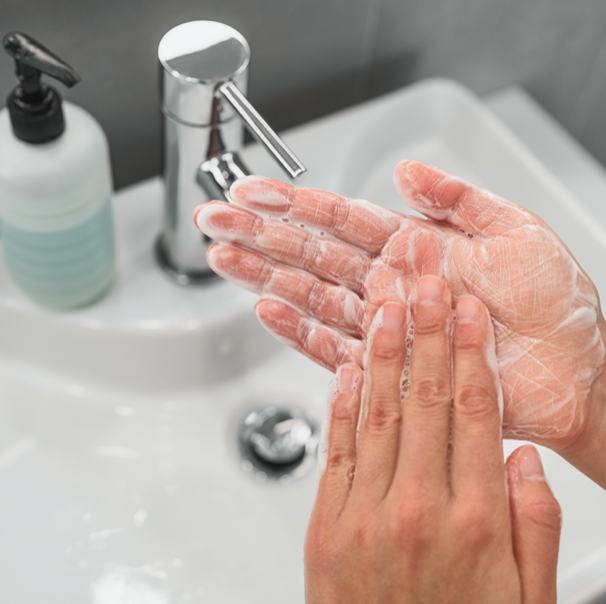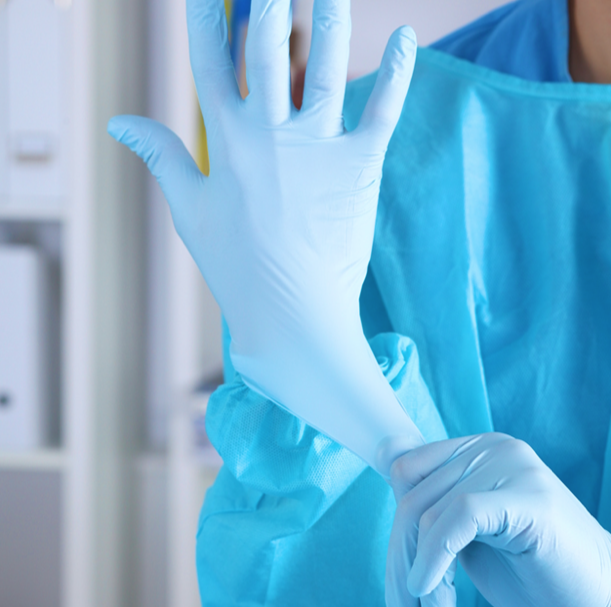- Fast results
- 4,000+ locations
- 4.8 star rating
Need Help? (888) GET LABS

This article is Medically Approved ✓ by Dr. Edward Salko
Healthcare workers safety equates to patient safety.
In the healthcare setting, there are plenty of infections healthcare personnel can develop.
The Covid-19 pandemic has opened our eyes to the battle healthcare workers (HCW) frequently face.
True, work-related infections have always been a challenge. But recent events highlight their impact on healthcare providers and patients alike.
Aside from the coronavirus, health workers like nurses, doctors, lab technicians, emergency medical personnel, radiologists, and pathologists are exposed to almost all infections.
This occupational hazard comes with grave consequences affecting worker safety, patient safety, and workforce shortage.
Hospitals and healthcare facilities have embedded protective measures in their operational system.
However, it is still imperative to have a certain level of personal control in preventing infection transmission.

Hepatitis B is the inflammation of the liver caused by the hepatitis b virus (HBV). The illness can manifest and last for a few weeks (acute hepatitis B). But it could also become a lifelong condition (chronic hepatitis B).
HBV is transmitted through the transfer of blood, semen, and other bodily fluids.
For HCW, HBV can easily be contracted while drawing or being exposed to infected blood, especially when wounds and sores are present.
Nonetheless, this is a vaccine-preventable disease.
When HBV enters the body, you can observe the following symptoms: jaundice, fever, fatigue, abdominal pain, dark urine, nausea, joint pain, and vomiting.
While other infections are highly prevalent, rubella has fewer cases in the US, according to CDC.
The availability of vaccines has dramatically reduced the spread of the virus.
Contracting rubella virus may result in severe medical conditions like encephalitis and arthritis. It could also lead to death.
If you are a healthcare worker who has not secured a vaccine against rubella, you are at risk of developing an infection from the virus.
The viral transmission can occur via direct contact with infected nasopharyngeal secretions.
Symptoms of rubella include skin rashes, low-grade fever, swollen lymph nodes, headache, cough, and runny nose.
Varicella-zoster is the virus responsible for varicella (chickenpox) and herpes zoster (shingles).
The initial infection develops into varicella which causes flu-like symptoms like fever, body aches, fatigue, and loss of appetite.
It will eventually lead to the appearance of rashes and red spots that turn into blisters.
Once the infection subsides, the virus remains dormant in the body. It can be reactivated later and will cause a herpes zoster.
Herpes zoster is considered more severe than varicella and could cause long-term pain to the infected person.
Varicella-zoster is highly contagious. If you haven’t had varicella before, chances are you’ll develop one if you contract the virus.
On the other hand, if you have already gone through varicella, you are at risk of developing herpes zoster.
A vaccine is available to combat the reactivation of the virus.
Mumps is a viral infection characterized by the swelling of one or both of the salivary glands located behind the ear.
Symptoms of this condition include the appearance of puffy cheeks, headache, fever, painful salivary glands, muscle aches, and fatigue.
HCWs without immunity to mumps and were exposed without any protection to infected patients are often required to take a leave of absence from duty.
The same protocol is followed when symptoms start to develop. The typical work exclusion is at least five days.
Measles is often associated with diseases children contract. However, the infection can still be passed to adults who do not have immunization.
The virus causing measles targets the respiratory tract and spreads to other parts of the body through the bloodstream.
If you have acquired measles, you may experience cough, fever, sore throat, runny nose, red eyes, and skin rash.
Measles is highly contagious. The virus can spread through the air when an infected patient coughs or sneezes.
HCWs who conduct face-to-face patient care need to secure proof of measles immunity. The said proof includes two doses of MMR vaccination, serologic evidence of immunity, and laboratory confirmation of the disease.
Also known as the flu, influenza is considered a seasonal respiratory disease. But it is essential to understand that the virus can be detected all year long.
Cases of flu often peak between December to February in the US.
You can characterize influenza with the following symptoms: fever, muscle aches, chills and sweats, shortness of breath, dry cough, stuffy nose, sore throat, fatigue, and headache.
Since influenza is a recurring disease, healthcare workers are equipped with protective measures, including immunization.
CDC advised all health care personnel to get annual flu shots. Between 2019 to 2020, vaccination coverage for HCWs was at 80.6%.
Tuberculosis is a respiratory disease caused by Mycobacterium tuberculosis. Without immediate treatment, it can lead to lung damage.
Those who have a weak immune system are more susceptible to the infection.
The bacteria spread through the air when an infected patient coughs, sneezes, or even talks.
Symptoms of tuberculosis include persistent cough, fatigue, bloody mucus, fever, night sweats, and weight loss.
The occupational hazard of acquiring tuberculosis has been documented among HCWs worldwide.
Several studies urged healthcare facilities to prioritize providing infection control and safety measures for HCWs to minimize the spread of tuberculosis.
Although vaccines have been developed for tuberculosis, it is not widely used in the US according to CDC due to effectivity issues.
The human immunodeficiency virus (HIV) causes an infection that directly attacks the immune system.
This disease is widely known to lead to the development of acquired immunodeficiency syndrome. This life-threatening condition allows other infections in the body to develop as immune cells are compromised.
Before, HIV transmission is associated with sexual intercourse. But since the virus can also be transmitted via needle sharing allowing the transfer of the virus from one bloodstream to another, it raised the alarm for the HCWs.
In the healthcare setting, exposure to a needlestick used to an HIV infected patient puts the HCW at 0.23% risk of infection.
With the gravity of how these infections can spread out in a healthcare setting, it is only sensible that HCWs get vaccinated for protection.
It is standard protocol in a healthcare facility to provide evidence of immunity, such as a vaccination record or blood test for a specific disease before handling a patient diagnosed with the same infection.
The CDC has recommended vaccines that should be secured by medical professionals working closely with patients.
· Hepatitis B
· Flu (Influenza)
· MMR (Measles, Mumps, and Rubella)
· Varicella
· Tdap (Tetanus, Diphtheria, Pertussis)
· Meningococcal
Clinical and personnel safety protocols for HCWs are mandatory for preventing occupational hazards, particularly work-related infections.
However, personal safety practices are still important factors in guaranteeing that you are well protected from diseases in the workplace.
With Covid-19 taking over hospitals and medical facilities, these safety measures have been tightened considering the mortality rate of the pandemic.
Nevertheless, as the pandemic is expected to subside, these safety measures should still be strengthened.

Ever since Ignaz Semmelweis pointed out the life-saving effect of handwashing, it has been a general protocol in the hospital.
However, the quality of handwashing should also be considered. The process should take no less than 20 seconds.

Surgical masks and gloves are primary protective gears that keep pathogens from entering your body. When handling infectious materials, thicker gloves are recommended.
Wounds and sores are common entryways of viruses and bacteria that cause diseases. In a medical facility, being aware of any breaks in the skin is necessary to avoid potential contact with the source of infection.
Disposal of needles, masks, and other infectious wastes must adhere to the guidelines and standards of EPA.
Following the protocol by heart is an important step to completely distance yourself from possible infection.
With the fast pace of work in the hospital, if you have been exposed to an infection and symptoms occur, it is essential to get a proper blood test.
You can take it in the laboratory.
You can consider Personalab’s Healthcare Worker Screening Profile Blood Test that comes tests for rubella, hepatitis B, varicella-zoster, mumps, and rubeola. Take it as a diagnostic first step or as a routinary assessment.
As a HCW, you are on the high ground of understanding the health implications of your job. Safety protocols have been proven to be effective almost all the time.
However, it is also essential to get tested regularly especially if you don’t have immunization.
While you prioritize the safety of the patients, there are many others in the community that are concerned for your safety as well.


We now offer pharmacy discounts through our PersonalabsRx platform.
We now offer pharmacy discounts through our PersonalabsRx platform.